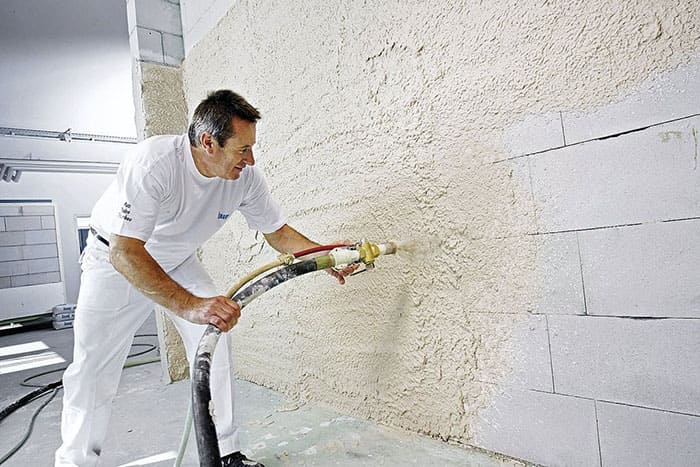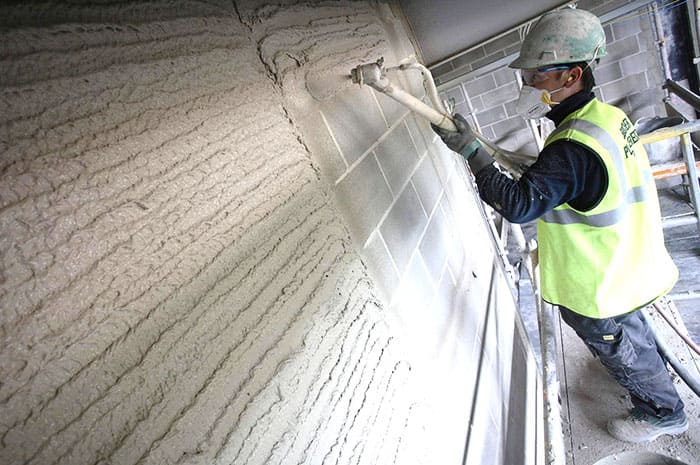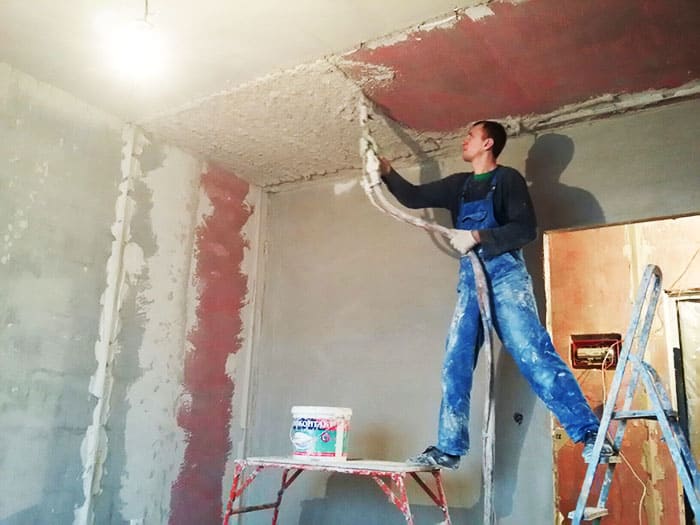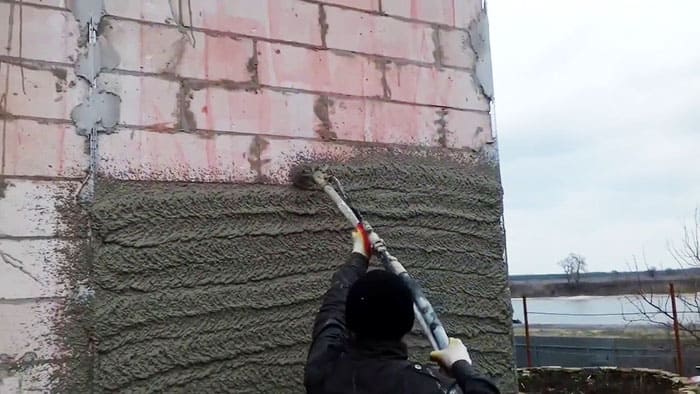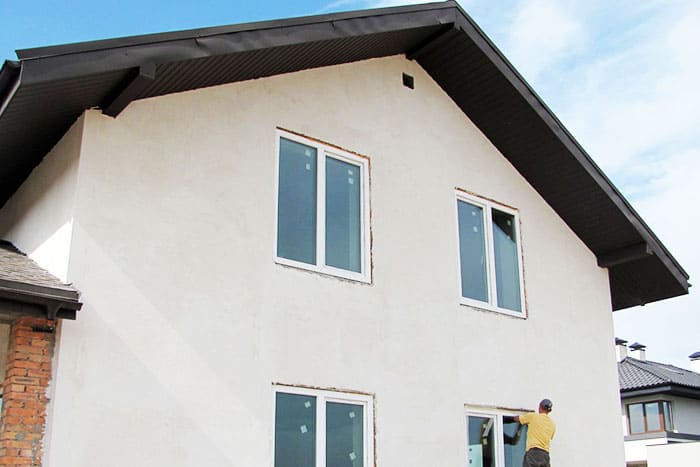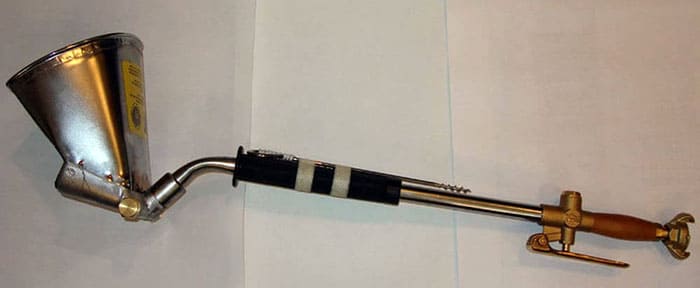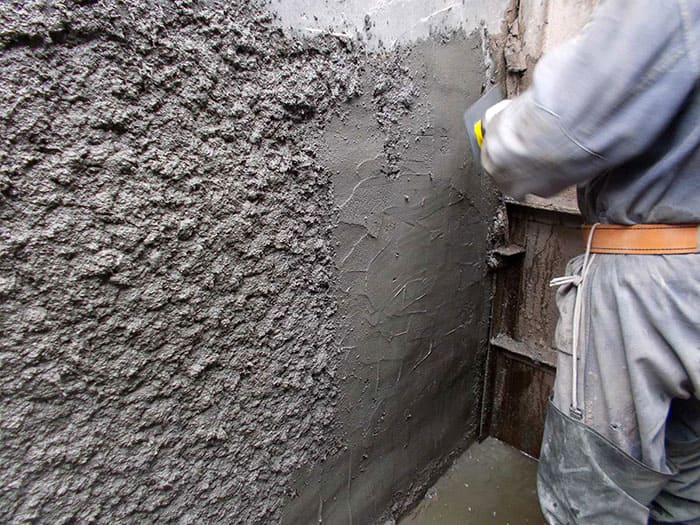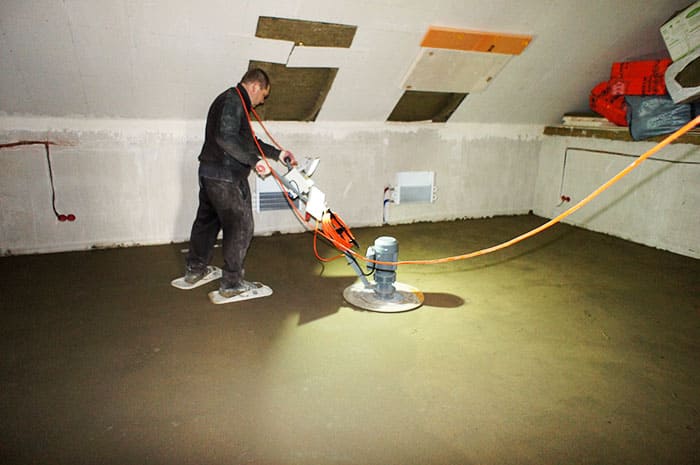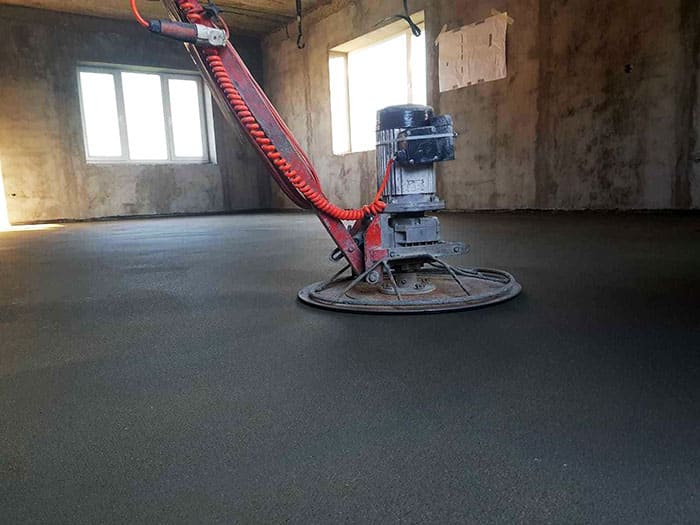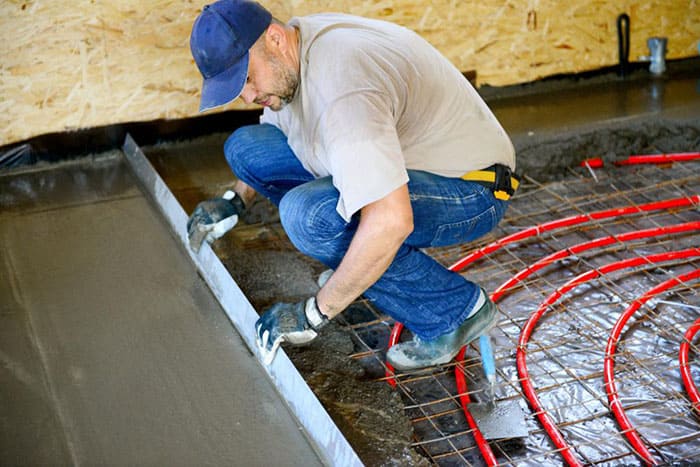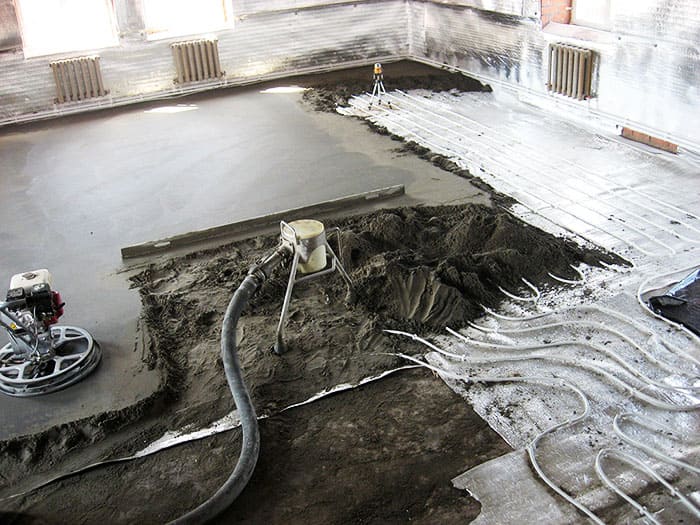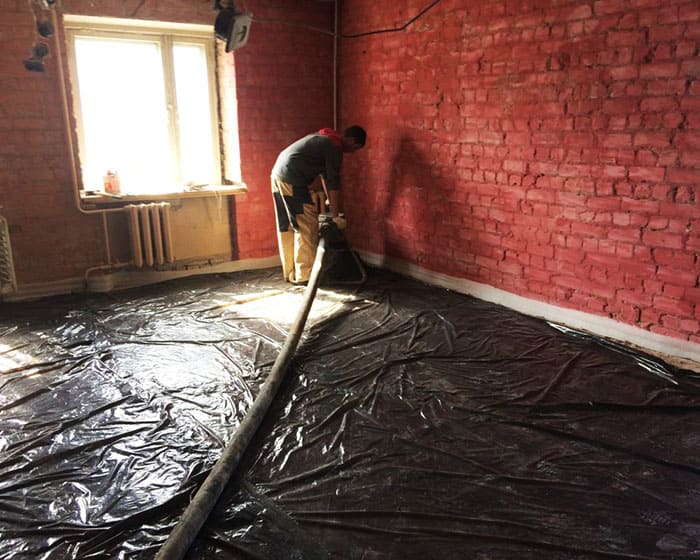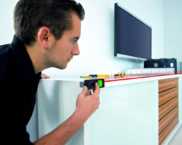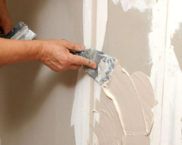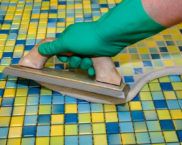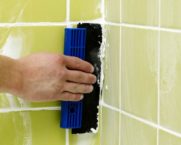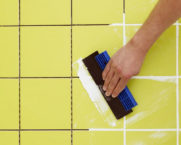Moving repairs from a dead center using mechanized plaster
All wall decoration options have their own nuances and difficulties. However, to automate the process of applying the composition, mechanized plaster began to be used. She, like everything else, has a number of advantages and disadvantages. In today's publication, the homemaster.techinfus.com/en/ editorial staff will consider the existing finishing options, their pros and cons of operation.
The content of the article [Hide]
What is mechanized plaster
This method plastering appeared relatively recently, but has already established itself from the best side. This solution is a special composition that is diluted specifically for finishing wall coverings. And the entire application process takes place almost automatically. During the application of this method, all work is carried out within 5-6 hours, at a time when manual work can take up to one day.
Mechanized plastering and their features
With the mechanized process of plastering walls, only two options for dry compositions are suitable for use:
Accordingly, both of these materials will differ in advantages and disadvantages. This also applies to the nuances of the operation of the finished applied material.
The main properties of such cladding include:
As for the disadvantages of these compositions, the gypsum option will be more expensive than the cement-sand one.
Option for cladding with mechanical plaster walls
This method is suitable for indoor and outdoor work. However, only the sand-cement type is ideal for outdoor cladding, because it has good strength characteristics, therefore it can be used in various operating conditions. As for gypsum plaster, it can be applied mechanically only indoors, where there is no effect of precipitation and other climatic phenomena.
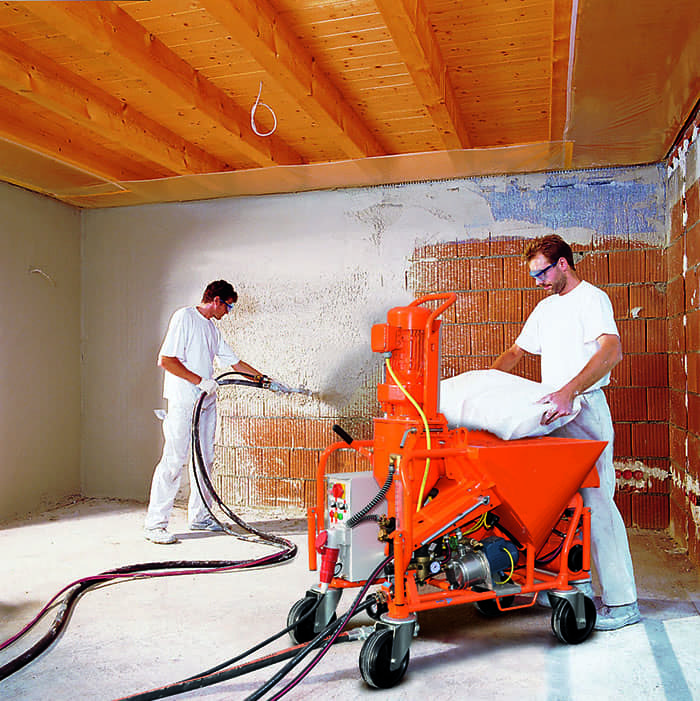
Processing is carried out in stages in order to have time to adjust the flowing layer
PHOTO: spec-centr.ru
Mechanized ceiling plaster
When decorating the ceiling in this way, a plaster finish is usually used. This option for arranging ceilings has several features:
If all the requirements are met, you will get a perfectly flat, sealed ceiling. Thanks to this type of interior decoration, it is easy to hide some irregularities and floor defects.
Mechanized facade plastering: what we are talking about
When processing exclusively street wall surfaces by a mechanized method, several stages of work are provided:
- Measurements and calculation of the amount of material.
- Preparation of instrumentation and suitable equipment.
- Facade preparation: cleaning of old plaster, cleaning of dirt and dust, installation of beacons.
- Priming (subject to the construction of a building from bricks or foam blocks).
- Fastening the reinforced mesh.
- Mixing the solution and applying the composition with a spray gun.
- Finishing work: smoothing and even distribution of the applied composition.
The stages of production work may vary depending on the type of wall covering, as well as the degree of preparation of the walls for processing.
Related article:
How to mechanically plaster walls
There are several options for technologies that apply plaster by machine. Each has unique characteristics. The editors of homemaster.techinfus.com/en/ will acquaint with all the details of each type with the use of different equipment for mechanized plastering.
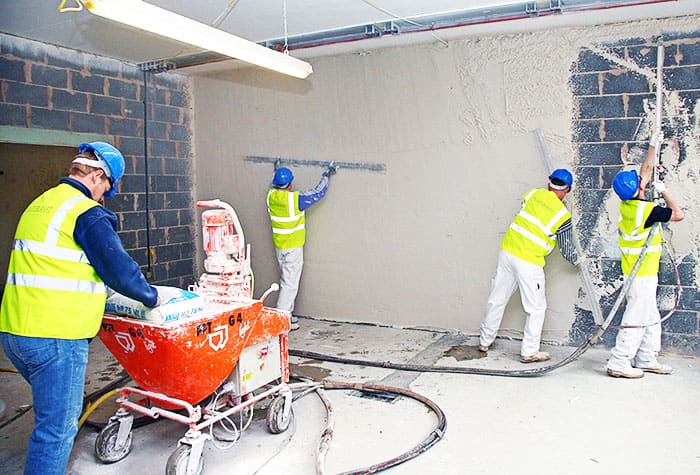
Several people are involved in the work: in order to prevent premature setting of the solution
PHOTO: putzzplaster.blogspot.com
When using machines and stations
Special equipment allows not only to spray the mixture on the selected surface, but also to perform its stirring. Such stations work from electricity. Water can be connected through a central line. You can also pour from buckets, strictly observing the required proportions.
After mixing, the solution is supplied through special hoses under high pressure. The worker only has to correctly hold the nozzle in his hands for uniform application of the material.
The use of a pneumopathic hopper
A pneumatic bucket or shovel is also powered by electricity. Ceiling and wall structures exist separately. These shovels differ from each other in the angle of inclination of the scoop: in the ceiling version it has a right angle, and in the wall version it has a 45º bend.
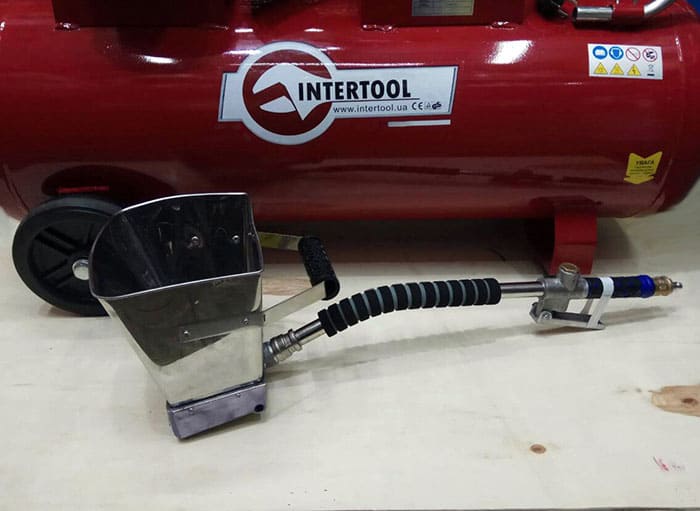
The pneumatic shovel is connected to a special hose that can withstand high material supply pressure
PHOTO: besplatka.ua
Thanks to the hopper, it is possible to obtain good adhesion when treating the surface with mechanized plaster. Due to such compact equipment, the application of building material will be carried out quickly and efficiently.

Plastering with a pneumatic gun: features
The use of a pneumatic pistol is somewhat difficult, since you need to get used to it. Before proceeding with thoughtless wall cladding, you need to know some of the positive features of the device.
- Significant time savings. With a cartridge pistol, it is possible to process about 150 m² of the surface within 24 hours.
- Material consumption is highly economical. In this case, it is enough to apply one layer for full alignment.
- Sufficient density of the material, since under pressure the plaster adheres to the wall as tightly as possible. After drying, such a surface is difficult to deform.
Equipment for the application of mechanized plaster can also be used to treat walls with decorative cladding.
We offer you to watch a video about mechanized plastering of walls.

Pros and cons of mechanized wall plastering
Automated application of building material to walls has a number of advantages:
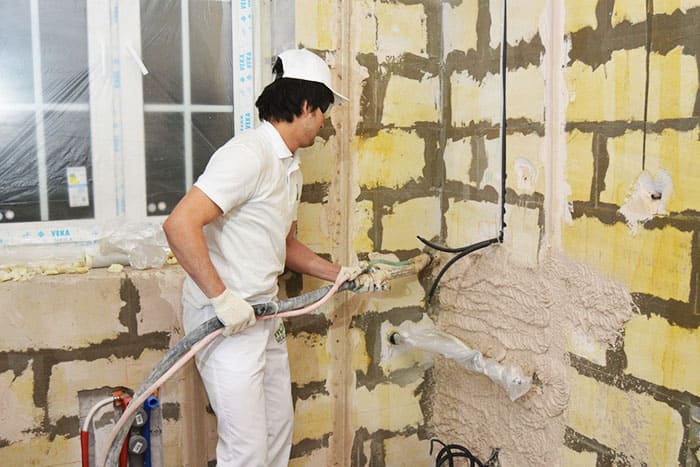
The cladding material is easy to fill in the grooves for electrical wiring
PHOTO: project930830.tilda.ws
As for the shortcomings, among them are:
After plastering, a layer of putty is often applied, which creates the final leveling layer before gluing wallpaper... It should be applied no earlier than two to three days after the automated finishing.
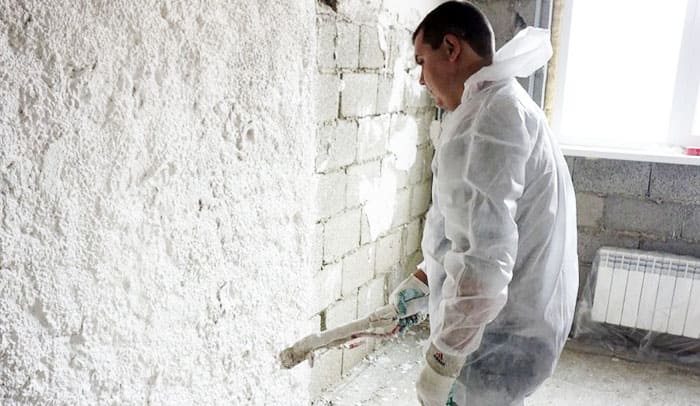
Before processing the walls, you must hide all the equipment. It is advisable to seal it with a film.
PHOTO: euroremont-74.ru
Review of prices for mechanized plaster for walls
In most cases, for automatic surface treatment with plaster, you have to involve craftsmen. This is due to the lack of suitable equipment for the work. Each of the construction companies offers its own cost of mechanized wall plastering for 1 m², depending on the chosen building material.
| Material name | Price for October 2019 per square meter, RUB |
|---|---|
| Rough plaster | 450 |
| Mechanized plastering of walls with cement-sand mortar | 580 |
| Under the wallpaper | 520 |

What is a mechanized floor screed
To level the floor surface, they try to use various methods, up to filling the base with chopped butt. Another thing is a mechanized screed. Let's see what it is.
It is a semi-dry plaster for mechanized application, which is distributed over the entire floor surface in a level. This process is performed using specialized solutions containing a small amount of water. The main tool for automatic concrete pouring is electrical equipment. Base leveling technology can be of several types.
Main types
There are several types of automatic floor screed.
- Wet is a solution with a sufficient amount of moisture in it. The optimum final drying time for the structure is one month. Of course, if special technologies were not used to stimulate the process.
- The semi-dry substance has optimal properties and is considered the most promising. This process is elementary and fast drying. Necessarily requires processing with a trowel. This creates a finished base for flooring.
- The dry mix contains bulk materials. Installation of such a screed is carried out using special equipment. Such a base must be covered with gypsum fiber. After that, they start laying the cladding.
Semi-dry technology is considered one of the most operational, therefore it is used in residential buildings that require a quick completion of repairs.
Pros and cons
The mechanized floor screed has the following advantages:
The only disadvantage that this technology has is the need to purchase special equipment.
Styling technology: video
For those who plan to concrete the floor surface on their own using electrical equipment, it is important to know the technology of work. To do this, we recommend that you carefully study the following video.

Reviews of mechanized wall plastering from real users
Before using the solutions, you should pay attention to the opinion of users who have already encountered this type of treatment.
Dear readers of our magazine, please rate today's publication. Be sure to ask questions about the topic. Also share your opinion and feedback in the comment form on which is better: mechanized plaster or hand plaster.



